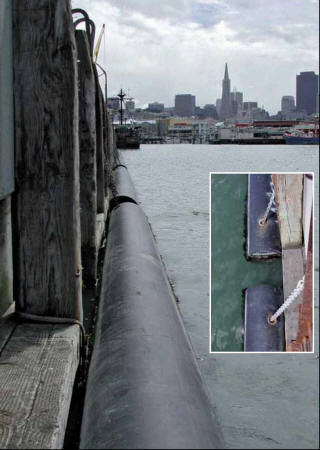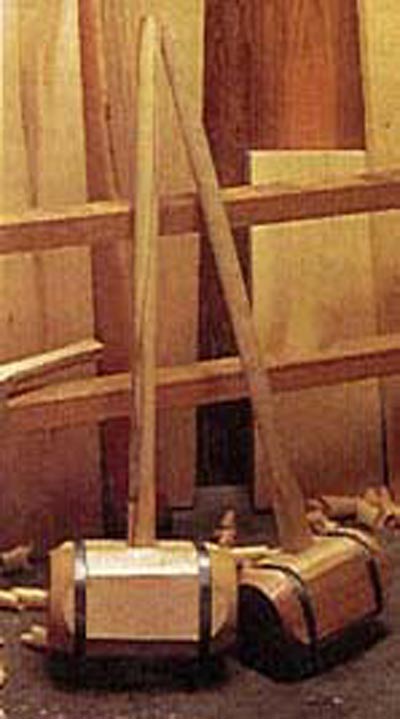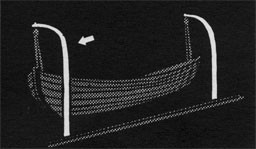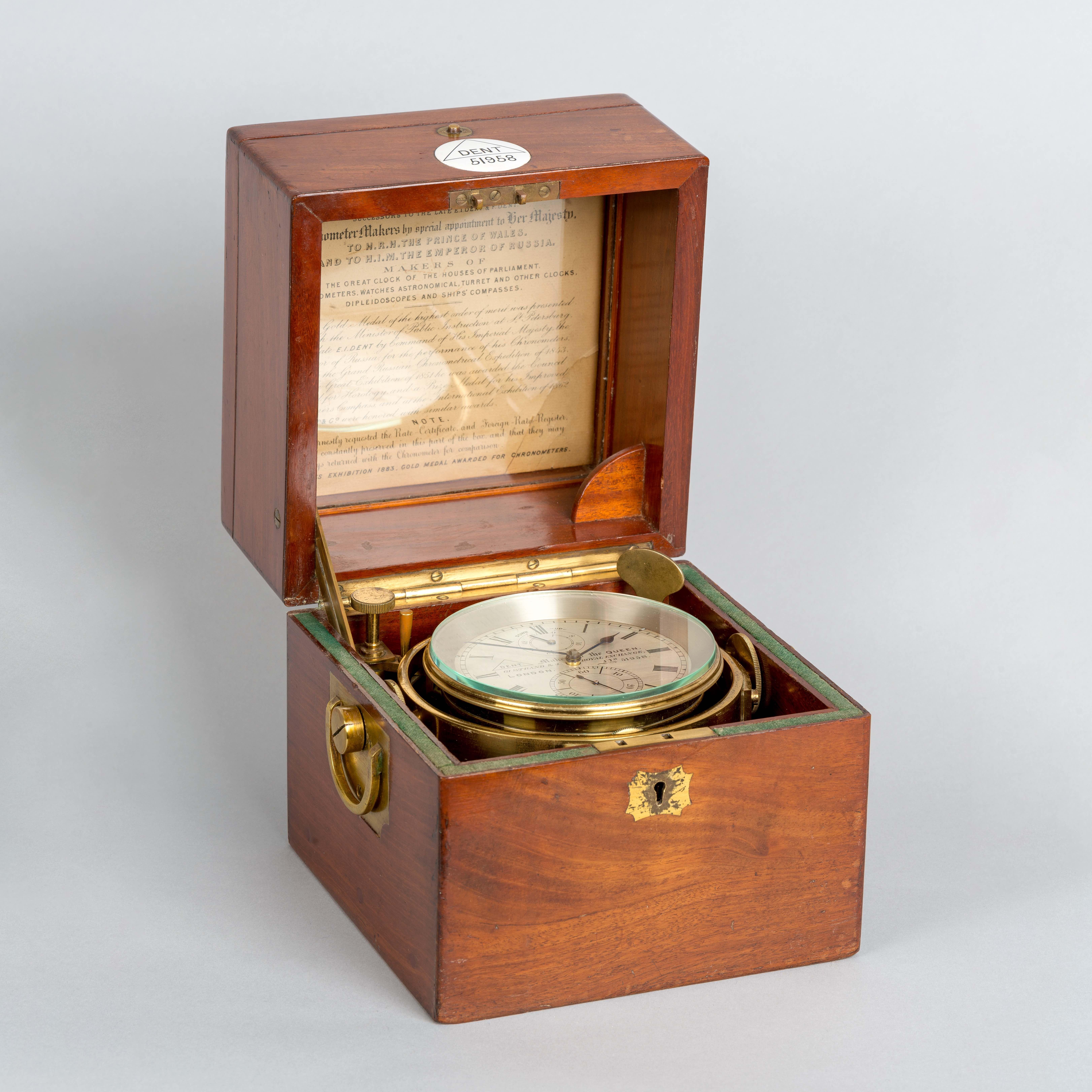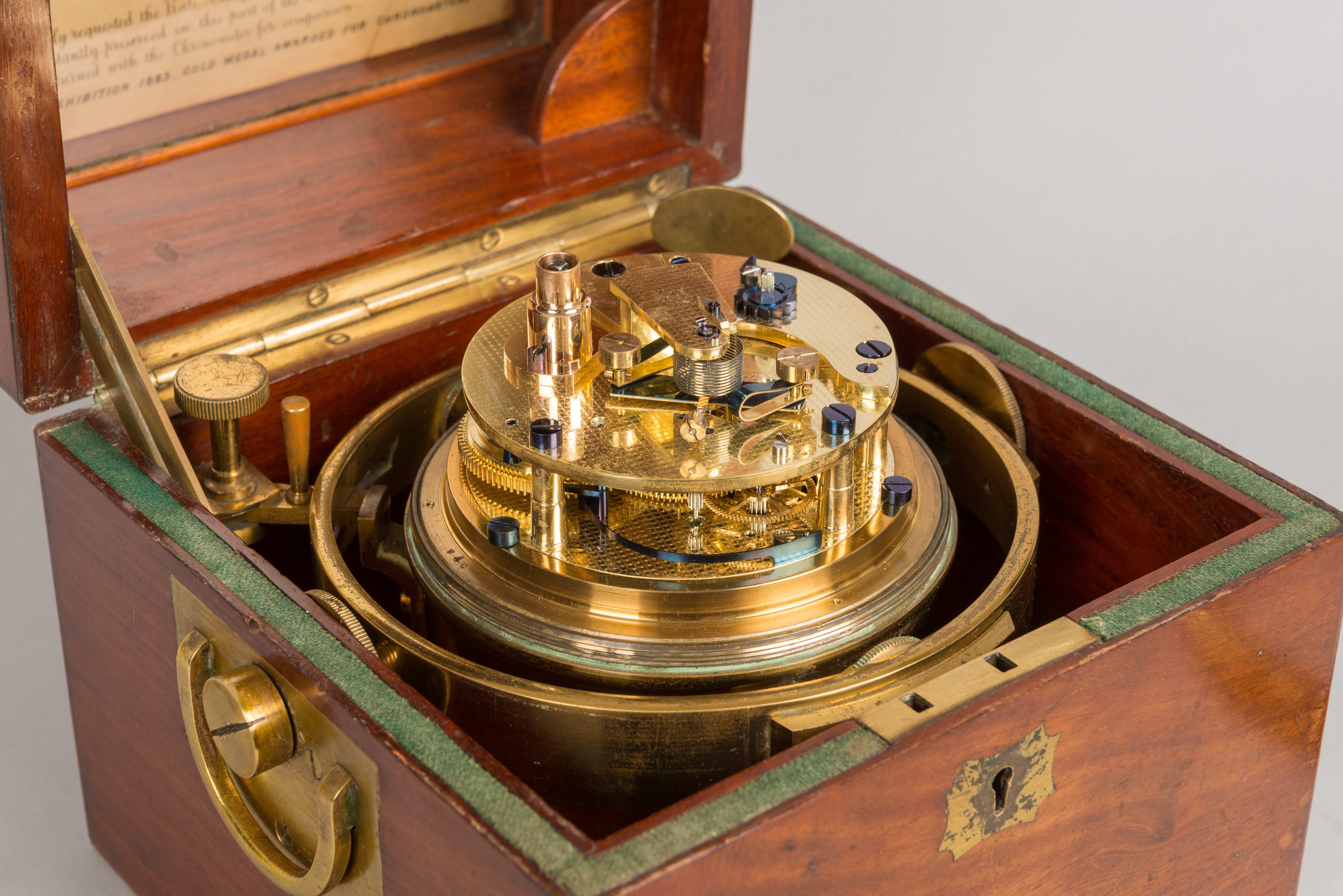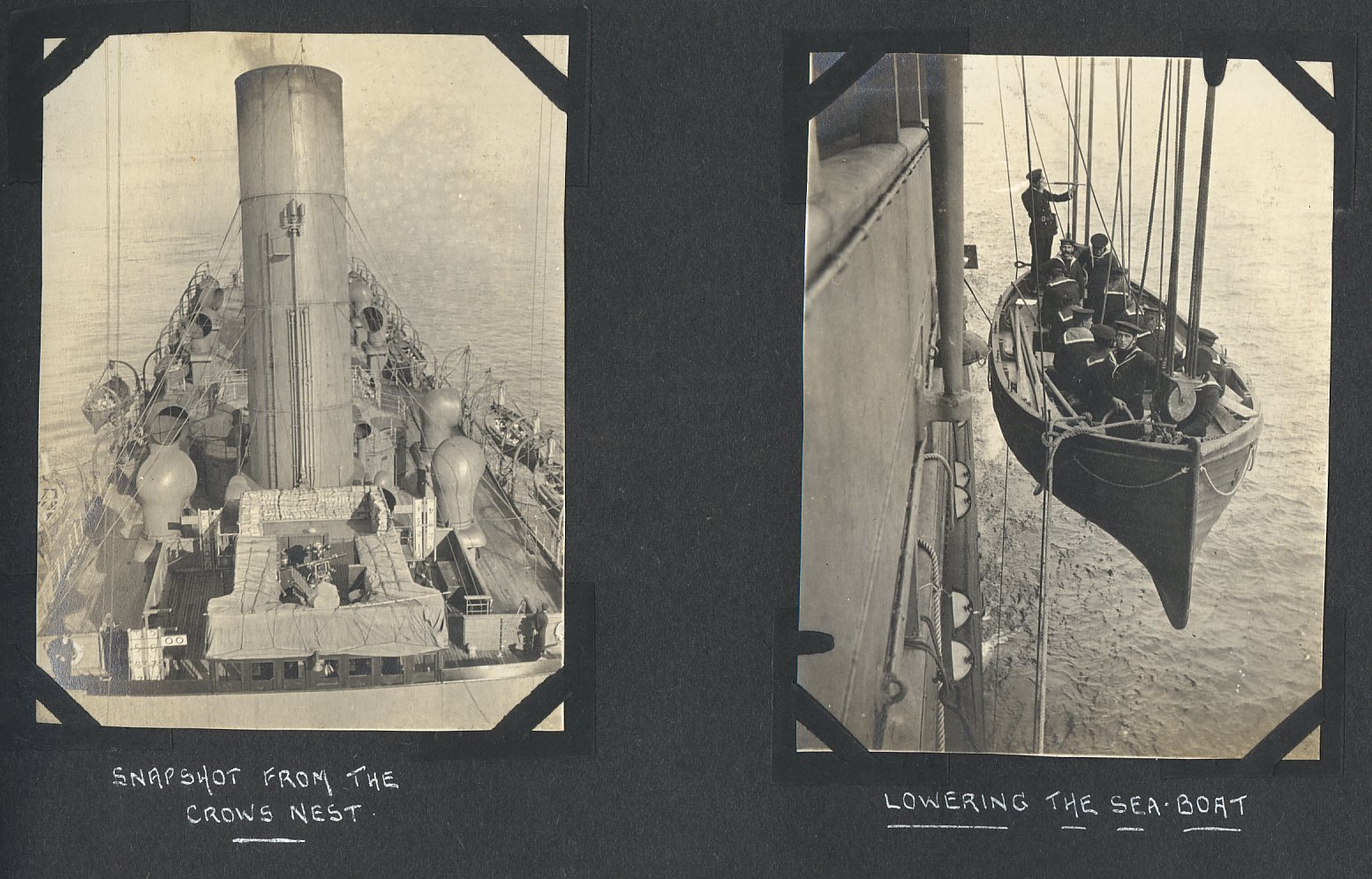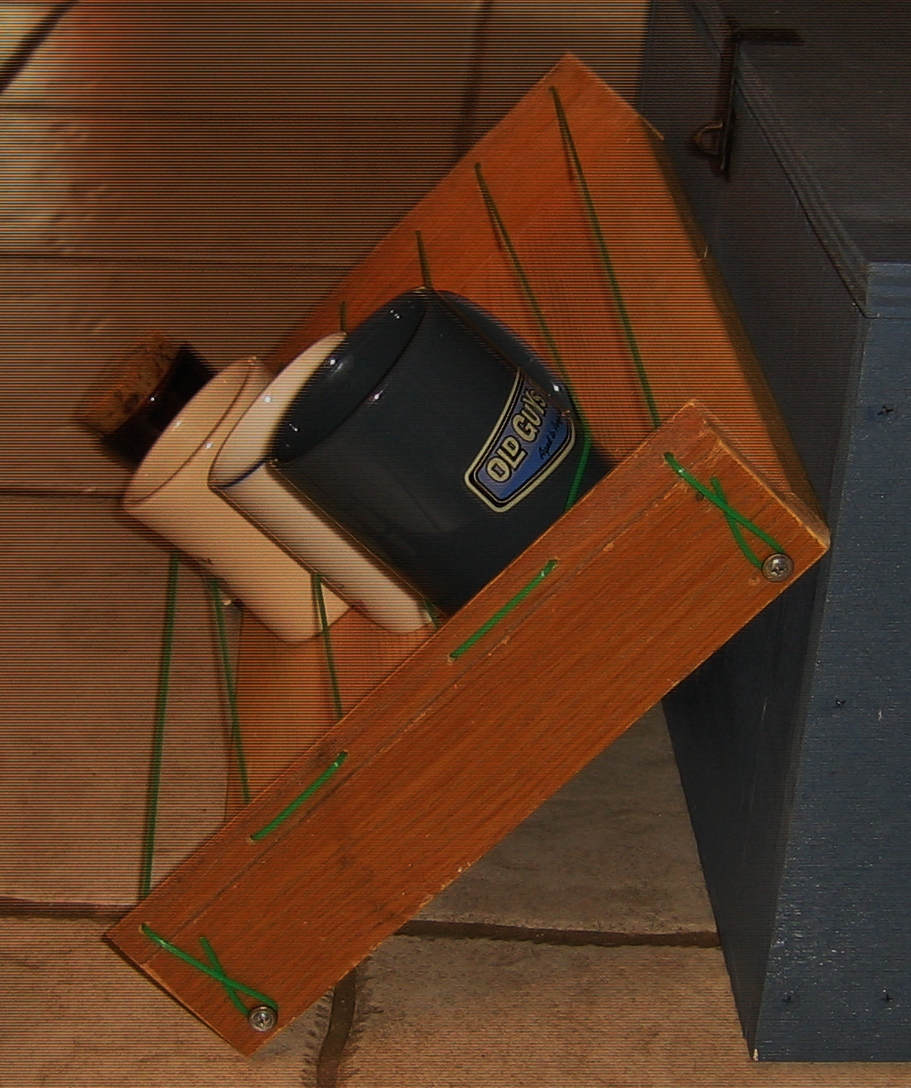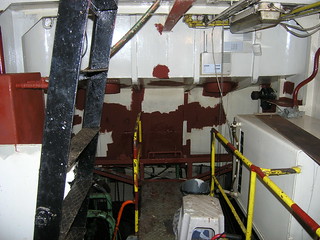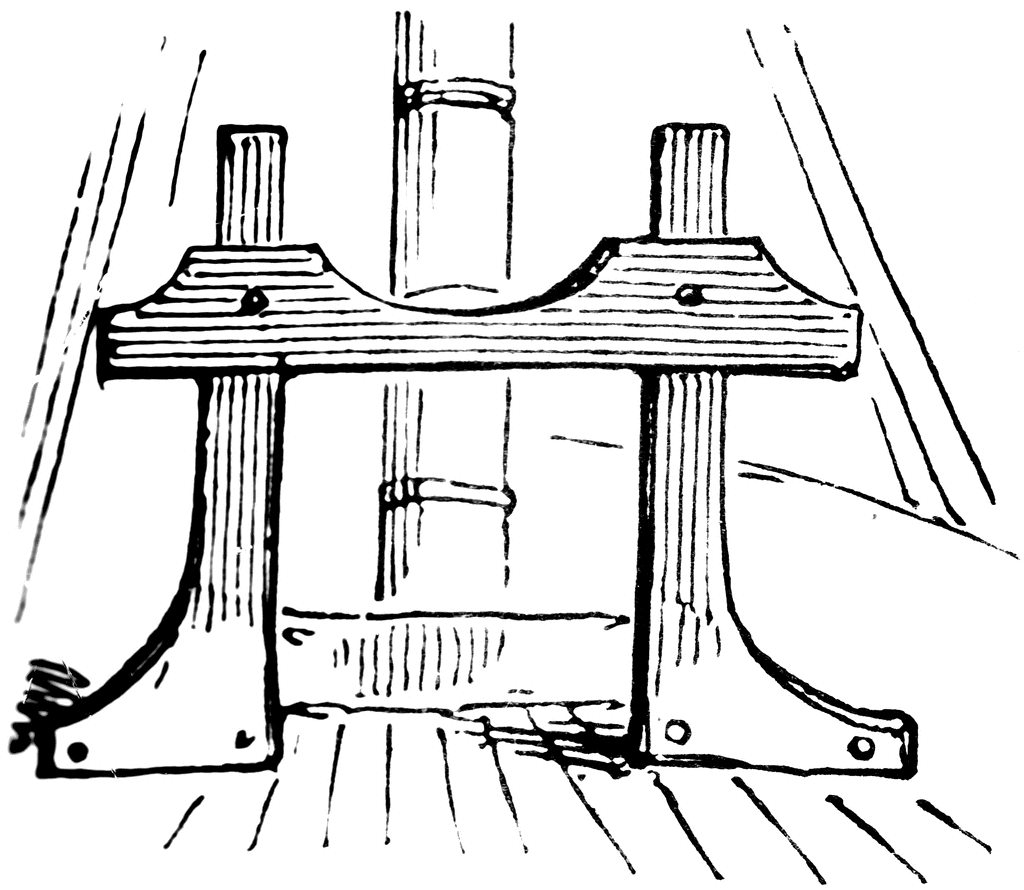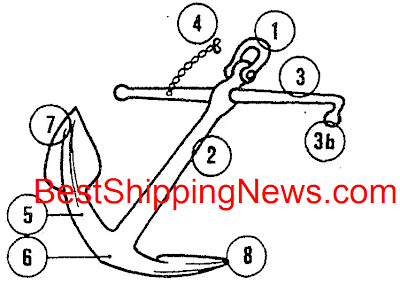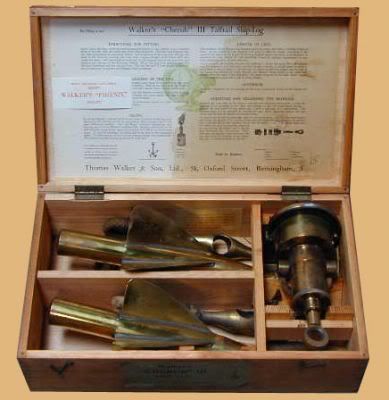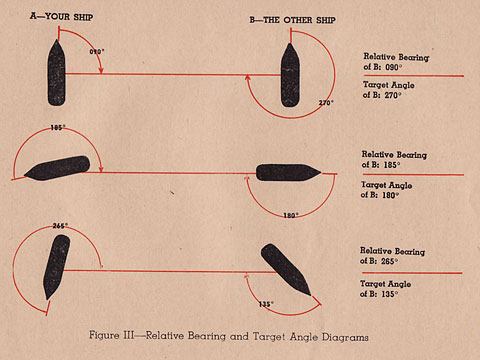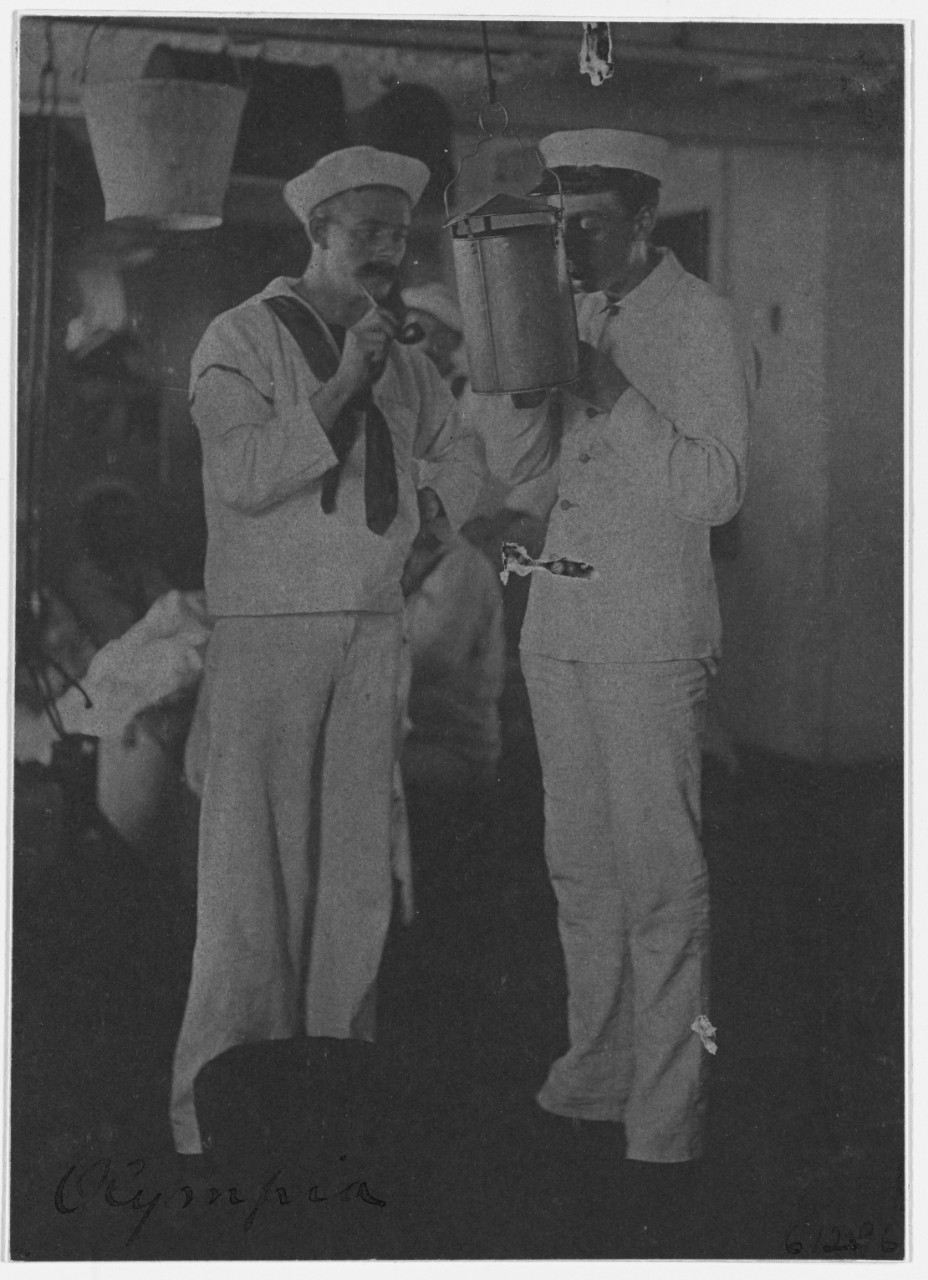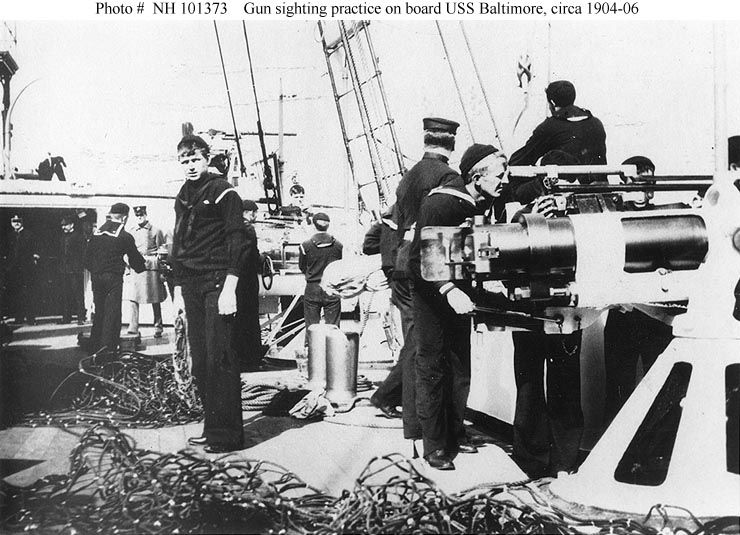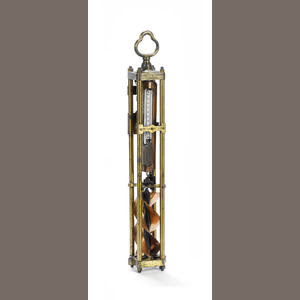Please post questions and suggestions for additions or changes in OWpedia: discussion.
The board Weather, sea, and ice terminology may also be useful.
You can use your browser's search function.
Items where alphabetic order didn't make sense are at the end.
Links:A B C D E F G H I J K L M N O P Q R S T U V W [x] Y Z Non alphabetic
----- A -----
Abaft
See Relative bearings
Abeam
See Relative bearings
Actaeon sweep
A single-ship sweep, consisting of a light wire, a small kite, a depth float and an explosive grapnel, and was towed from each quarter of a minesweeper. On meeting a mine, the explosive grapnel parted its mooring; the sweep proved particularly useful in locating new fields, and had the advantage over the " A " sweep that it could be used by night.
http://www.theodora.com/encyclopedia/m2 ... aying.html [Maikel]
One Inch Aiming Rifle
See Deflection Teacher.
+
Don't know much about naval gunnery, but before the days of laser rangefinders etc, medium calibre land weapons sometimes had small calibre ranging/sighting rifles alongside the main barrel. Two that spring to mind are early Chieftain tanks and the Wombat recoiless gun.
[Haywain]
A weapon that fires a round 1" in diameter is not something that you pass around from hand to hand! This had to be a fixed weapon and the idea that it was attached to the barrels of the ship's guns as described by Haywain makes a lot of sense.
[dorbel]
Airing of bedding - Their bedding was taken to an open deck and draped across lines, etc to air. Imagine what sweat, condensation would do to your bed? [kin47]
All hands, from all hands, at all hands
"48 hours bread and water from all hands until 10 PM. for not obeying orders of a Petty Officer"
01/08/1887 - http://oldweather.s3.amazonaws.com/ow3/ ... _145_1.jpg [jd570b]
"At all hands, 5:00 o'clock, released S.F. McMahon - W.T. - from sentry's charge, he having become sober."
http://oldweather.s3.amazonaws.com/ow3/ ... _269_1.jpg [Maikel]
"All hands" has two meanings. One is official, and is a longstanding part of Navy regulations, dating back to 1843 when the "rules and regulations for the government of the Navy" was first codified. The other is just an offhand jargon term meaning everyone in a specific department, or everyone aboard, depending on who's calling for all hands.
The official, daily one, actually happens twice. Once in the morning at 08:00, with the first call given five minutes prior for all hands to morning quarters, which is the morning formation for muster and inspection, as well as for the raising of the ensign. The second is at sunset, which is another formation for muster and inspection, lowering of the ensign, and release from duty for all sailors not assigned a night watch. [HatterJack]
Always done to discharge ammunition before docking. This is then taken to a specific wharf for storage right away from the main port area if possible. [dorbel]
Anchor


There are definite reasons to use a particular anchor. Often it relates to: a) one is heavier (better) than the other; b) sailing vessels need to stand away from the anchorage in one direction (made easier if the anchor is on the unfavored side); c) weather or tide tends to back/veer in one direction so to keep from riding over the cable; d) if used to control the bow during docking maneuvers then the inboard (dock side) anchor is used, contrary to what one might guess; e) ... Also important to log 'anchors at the hawse'* when operating in close quarters since this seems to be the only time engine and rudder controls fail and if there is a crunch it's best to not also be obviously ignoring accepted practice.
* In this context it means the anchor is literally dangling from the hawse pipe, and ready to drop. Also implies all the securing attachments - devil's claw, etc. - are removed, so the anchor can be dropped in an instant (as a matter of safety). General practice when entering a harbor. [Kevin]
[AND]
Two anchors is always preferable if there is likely to be a blow or if the holding ( the state of the sea bed) isn't good. It takes longer to weigh of course, so you will see "at single anchor" when your vessel is making a short visit or is required to put to sea at short notice.
[AND]
It is actually the weight and drag of the anchor chain (or cable) lying on the sea bed that keeps the ship where it is. The flukes of the anchor do dig in of course but once the cable is veered out, the strain on the anchor itself should be minimal or non-existent.
[AND]
A careful skipper will always take bearings on two or more points when anchoring in any bay, enabling the officer of the watch to see at a glance if she is dragging her anchor. [dorbel]
[AND]
I found a reference to sorting out cats, fish and capstans (can't quite recall where - sorry!) the other day. Finally looked this up: refers to hauling up anchors. The 'cat' is the cathead, and the 'fish' the fish-davit. Found these articles (first short, second leeeeeengthy). http://www.1902encyclopedia.com/A/ANC/anchor-05.html, http://www.hnsa.org/doc/luce/part5.htm [AvastMH]
[AND]
http://hdl.handle.net/2027/nyp.33433008 ... %3Bseq=221
[AND]
"BOWER-ANCHORS. Those at the bows and in constant working use. They are called best and small, not from a difference of size, but as to the bow on which they are placed; starboard being the best bower, and port the small bower." http://www.gutenberg.org/files/26000/26 ... 6000-h.htm
[AND]
Bent sheet cable: When the navy attaches something to something, they bend it on. Here they are attaching a cable (probably a thick wire rope) to the sheet anchor, which is a spare and doesn't have a cable of its own. The reason is that nasty NE force 7 that is blowing directly down the harbour. [dorbel]
Anchor buoy and barricoe
"An anchor Buoy is used to mark the position of the anchor when it is on the bottom, and is always streamed before the anchor is let go. Its use is of particular importance in crowded anchorages to enable other vessels to keep clear of your anchors and cables. The anchor buoy used in the Royal Navy usually consists of a strengthened barricoe, fitted with slings to which the buoy rope is bent." - http://books.google.it/books?id=qDQuAQA ... CEIQ6AEwAQ [lollia paolina]
Anchor Pawl
A pawl is a movable lever that engages a fixed component to either prevent movement in one direction or restrain it altogether.
https://en.wikipedia.org/wiki/Pawl [ggordon]
Ardois system: "A widely used system of electric night signals in which a series of double electric lamps (white and red) is arranged vertically on a mast, and operated from a keyboard below." - http://www.thefreedictionary.com/Ardois+system
The armed merchant cruisers' crews in WW I were mostly Mercantile Marine Reserve, civilians under military discipline. The officers were Merchant sailors with RNR commissions. As a whole, you are only going to find a few sailors, telegraphists, and signalmen from the Regular Navy in converted merchant ships. [kin47 - Don]
Arming, lead arming
A hollow indentation in the end of the lead permitted "arming" with tallow or another sticky substance so that a sample of the bottom could then be brought up to aid navigation or in unfamiliar locations establish whether it was suitable for anchoring. The nature of the bottom might be mud, sand, shingle or shell for examle or if nothing attached to the tallow, rock.
https://www.historicnavalfiction.com/ge ... -soundings

Compulsory for the Captain to read the Articles of War to his Ship's Company at least once a month. These are the regulations by which the ship is governed and cover the offences with which a seaman may be charged and the penalties thereto. Usually read on a Sunday at divisions. [dorbel]
[AND]
The 1866 version of the "Articles of War" read to the sailors on all of our ships: http://www.pdavis.nl/NDA1866.htm
The 1884 version does not seem to be digitized, but a listing of the changes made through 1884 (the version our sailors heard) can be found at: http://www.pdavis.nl/NDA.htm
The earlier version of 1757 with its more draconian punishments: http://www.hmsrichmond.org/rnarticles.htm [Janet Jaguar]
At Home:
Admiral Captain and officers "At Home." https://s3.amazonaws.com/oldweather/ADM ... 0066_1.jpg
[jeff]
An 'at home' was an informal gathering at, well, one's home, so I guess the officers were holding a social evening on board, probably with guests.
[Caro]
+
[jil]
Held Ship's Company "At Home" https://s3.amazonaws.com/oldweather/ADM ... 0129_0.jpg
+
A regular part of "Showing the Flag". The ship is open to visitors, boys are shown the guns and the boats and kind-hearted Jacks in gleaming whites attentively assist young ladies to climb ladders and look through telescopes. Refreshments are served.
[dorbel]
Azimuth and amplitude can refer to two different methods of determining compass error, basically using bearings to the sun (most commonly) or other body. It is still in routine use today for determining gyro (compass) error at sea - where there are no natural ranges to 'swing' the compass on. I've used these techniques to reconstruct the compass card after the ship was struck by lighting. The strike - aside from blowing the HF radio antennas completely off the mainmast - completely magnetized the ship resulting in transient compass error of up to +/- 25 degrees. See also the chapter in Mody Dick about 'thunderstruck' - which was incidentally lifted from Scoresby's Account of the Arctic Regions. [Kevin]
----- B -----
Badge, Ship's Naval heraldry is a form of identification used by naval vessels from the end of the 19th century onwards, after distinguishing features such as figureheads and gilding were discouraged or banned by several navies.
Naval heraldry commonly takes the form of a badge, seal, crest, or coat of arms designed specifically for a ship
Also: ship's seal or ship's crest. https://en.wikipedia.org/wiki/Naval_heraldry
Badgemen: Sailors of the Royal Navy with good conduct badges. http://www.eurekaencyclopedia.com/index ... oned_Ranks [Caro]
Balloon ship
WW 1 -- There were 1 or 2 observers in the basket under the balloon which was attached by a wire rope to the ship. The obervers had binoculars & telephone and gave instructions to the battle ships with detailed information on targets out of sight of both the allied warships & the soldiers ashore. The spotters could see where the shells landed and could tell the warships how close they were to the target.
[John Moscow]
Bank fires See Drew fires / Draw fires
Barabara
Traditional Aleut winter house.
https://en.wikipedia.org/wiki/Barabara and https://www.wdl.org/en/item/16046/
... they did take the barometer down (and presumably pack it in a padded case) during practice firing on some ships. [dorbel]
Barricoe: A small water barrel carried in boats. The word comes from the Spanish "Barrica" - a cask - http://www.hmsrichmond.org/dict_b.htm [Caro]
[AND]
See breaker
Base ships were floating barracks, offices, store ships, etc, etc. You see a base ship usually in the circumstance where the shore command has outgrown its space and needs more room. I.E. about any of the major naval commands. [kin47]
Basnett's sounding machine: https://archive.org/stream/wrinklesinpr ... ch/basnett
Bass broom: The stiff bristles are made of piassava fibre. [dorbel]
Bath Brick
Patented in 1823 ... used for cleaning and polishing.
https://en.wikipedia.org/wiki/Bath_brick
Battery
https://en.wikipedia.org/wiki/Artillery ... aval_usage - [ggordon]
A battleship is a large armored warship with a main battery consisting of heavy caliber guns. Battleships were larger, better armed and armored than cruisers and destroyers. As the largest armed ships in a fleet, battleships were used to attain command of the sea and represented the apex of a nation's naval power from the 19th century up until World War II. With the rise of air power and guided missiles, large guns were no longer deemed necessary to establish naval superiority, and as a result there are no battleships in active service today....The word battleship was coined around 1794 and is a contraction of the phrase line-of-battle ship, the dominant wooden warship during the Age of Sail. http://en.wikipedia.org/wiki/Battleship [Janet Jaguar]
Bbl
Abbreviation for barrel.
http://www.thefreedictionary.com/bbl.
http://www.natemaas.com/2011/01/correct ... ation.html
If you take a bearing on a single point and draw a line on your chart, you know that you are somewhere along the line to that point. Take a bearing to a second point, draw another line and in theory you are where those lines intersect. In practice you won't be stationary even if your engines have stopped and there will be small errors in the taking of the bearings and their transposition to the chart, so navigators like to take a third bearing and draw a third line. This will cross the other two lines and make a small (hopefully) triangle known to sailors as a cocked hat and you are somewhere in that triangle. When anchoring a ship, the navigating officer will take two or three bearings to landmarks and enter these in the log, so that succeeding officers of the watch can by checking these, ensure that the vessel isn't dragging her anchor(s).
After a sighted bearing is noted, we sometimes (and should always) see (M), (T) or (S) after the bearing. Sometimes the letter is lower case and I don't think that that matters. (M) is short for magnetic and indicates that the bearing is with reference to Magnetic North and is the uncorrected bearing straight off the pelorus. (T) is short for True and indicates that the bearing is with reference to True North. The navigating officer has corrected the bearing and laid it off on the chart. More rarely though we see (S) and this one I don't know. [dorbel]
Beckets, or rope handles (see http://www.frayedknotarts.com/beckets.html). [Steeleye]
Go back to the beginning
